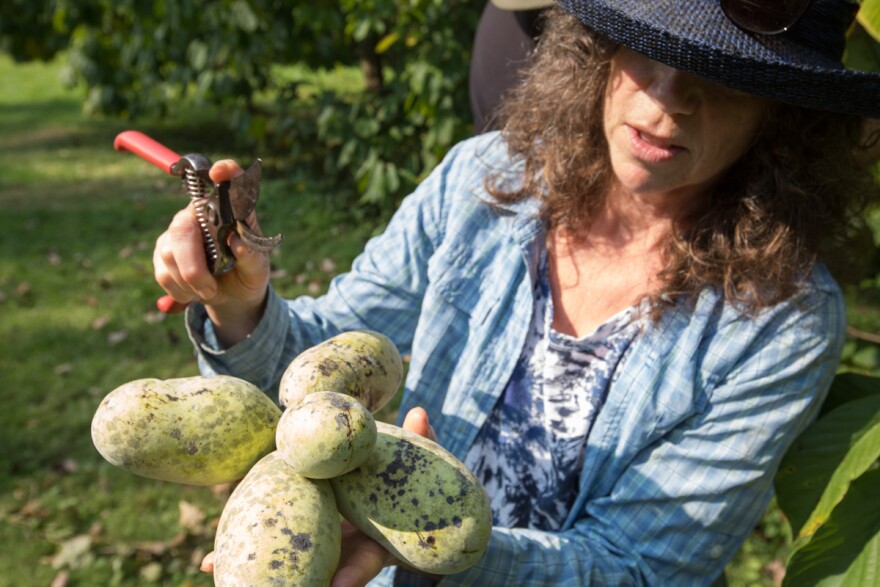Caroline Willette cuts through a pawpaw while her husband, Dale Hill, stands by with a spoon.
If you’ve never had one, the taste of the fruit is a little difficult to describe. It’s kind of like a mango with the texture of a banana -- sometimes with coffee undertones. The riper these oblong green fruits become, the more their flesh takes on a custard consistency.
It’s not for everyone, but the fruit has a kind of cult following. For years, people have foraged up and down the United States every fall for the chance to taste a few.
“They grow wild all the way from Florida all the way up into Canada, so they are all over,” Hill says.
Despite this, pawpaws aren’t typically found on supermarket shelves. That's mostly due to their short season.
“Pawpaw season here in Kentucky starts right at the end of August and continues through the end of September, depending on the varieties,” Hill says.
They’re sensitive, too; if picked too early, they won’t ripen on the shelves and will stay rock-hard -- definitely not cash-crop material.
But that’s not going to keep farmers like Hill and Willette from trying to get their pawpaws in the produce department of local stores -- though, to be fair, they’re not your average farmers. They are both practicing physicians, whose farm -- called Louisville Llama Farm -- is about two miles from the Louisville Zoo, running up against Beargrass Creek.
There, they raise llamas, chickens, grapes and, of course, pawpaws.
Hill, who is an amateur horticulturist, has started cross-breeding pawpaw varieties to yield a better crop. The pair has spent hours harvesting over the past few weeks, and the ripe ones make it to local chefs and grocery stores.
Mark Hamilton is the produce manager at Rainbow Blossom in St. Matthews. He says the demand for local pawpaws continues to grow each year.
“I see the same customers and they buy as many as they can when they are here,” Hamilton says. “And it’s nothing for me to go in the back and come out and have them all be gone and I have to restock.”
He thinks part of this is because of an increased interest from customers in foraged and local produce. Willette agrees.
“I think there’s a hunger for more diverse culinary experiences and more acceptance for that sort of thing,” she says.
As a result, this year Willette and Hill have harvested about 125 pounds of pawpaws and processed 40 additional pounds to freeze.
And, they say, the fruit’s “paw-pularity” (couldn’t resist) is only increasing.







